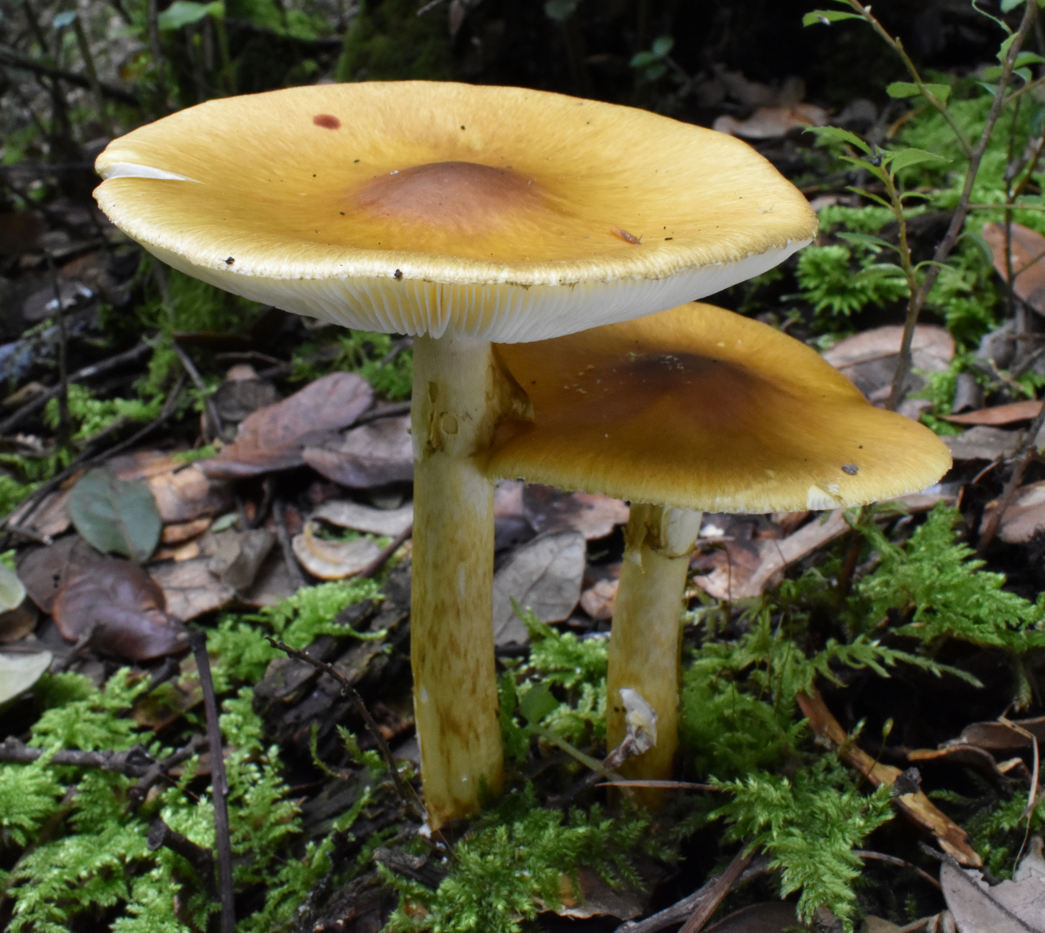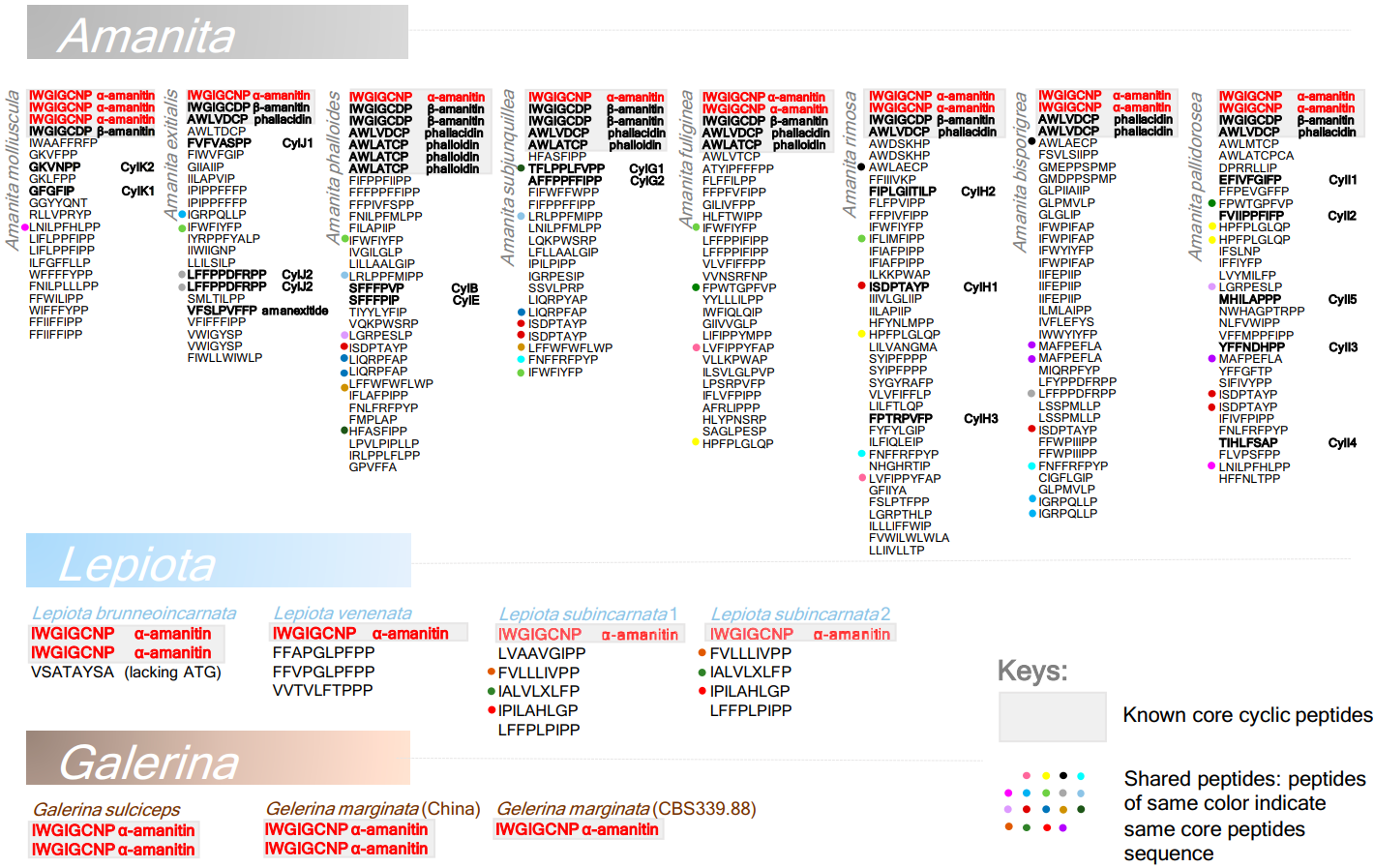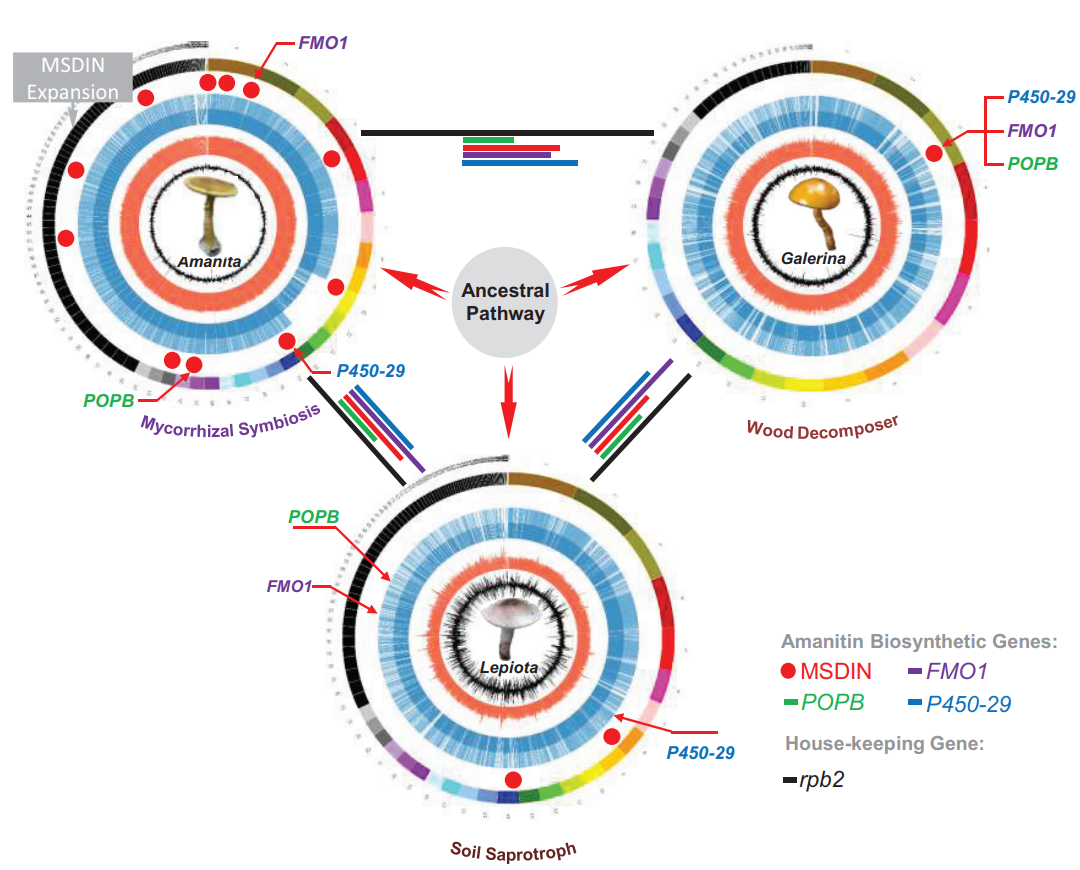Poisonous mushrooms are a significant threat to human health, yet contribute to important drug and biomolecule developments.
Amanita mushrooms (Fig. 1) are without doubt the deadliest mushrooms known to mankind. However, distantly related mushrooms, such as Galerina and Lepiotamake the same deadly cyclic peptide toxin, α-amanitin.
Through genetics, researchers from Kunming Institute of Botany, Chinese Academy of Sciences (KIB/CAS), found two new genes responsible for the toxin biosynthesis and discovered that these mushrooms use variations of a similar pathway for the toxin production.

Fig.1. Deadly Amanita subjunquillea in Yunnan Province, China.
With independent evolutionary trajectories, the three mushroom genera, Amanita, Galerina and Lepiota, tailored their abilities of toxin production to their own needs (Fig. 2).
Amanita made significant innovations to produce hundreds to thousands of cyclic peptide toxins by harnessing a large number of precursor genes (MSDINs) and posttranslational genes including P450s.
In stark contrast, Galerina possesses only one precursor gene encoding α-amanitin. Lepiota is somewhere in between, produces around 10 precursor genes.
The genetic basis for Amanita to manufacture an arsenal of known and unknown toxins is the underlining mechanism for Amanita to assume the deadliest mushrooms, causing over 90% of all lethal poisoning cases.

Fig.2. MSDIN core peptide sequences and known cyclic peptides in lethal Amanita, Galerina, and Lepiota. Core peptides (the amino acid residues in the cyclic peptide products) of known MSDINs across the three genera are listed on top of each column (shaded in gray). The α-amanitin–forming peptide is marked in red, which is the only one shared across the three genera.
How did these different mushrooms obtain the same pathway? The researchers found that horizontal gene transfer (HGT) is the underlining mechanism, with which various mushrooms obtained the ability to produce the toxin instantly (Fig. 3).
In addition, HGT did not occur among these three genera, but probably through another unknown ancestral mushroom(s).
This study was published by PNAS as a full research article in Genetics section, entitled “Genes and evolutionary fates of the amanitin biosynthesis pathway in poisonous mushrooms.”
For the first time, how distantly related lethal mushrooms make the same toxin is unveiled. The genetic basis discovered in this study provides possibilities to harness the ability and invent novel cyclic peptides for the wellbeing of mankind.

Fig.3. Evolutionary outcome of the amanitin biosynthesis pathway in mushrooms. Within the representative genomes for Amanita, Galerina, and Lepiota, predicted genes are indicated as blue lines, GC content as red lines, and GC skew as black lines. Four toxin biosynthetic genes are color-labeled to show their respective arrangements in the genomes. Genetic distances of the biosynthetic genes are similarly color-coded as lines connecting genome circles (housekeeping rpb2 indicated as black lines). The thick red arrows represent the best hypothesis from comprehensive evaluations.
(Editor: YANG Mei)




